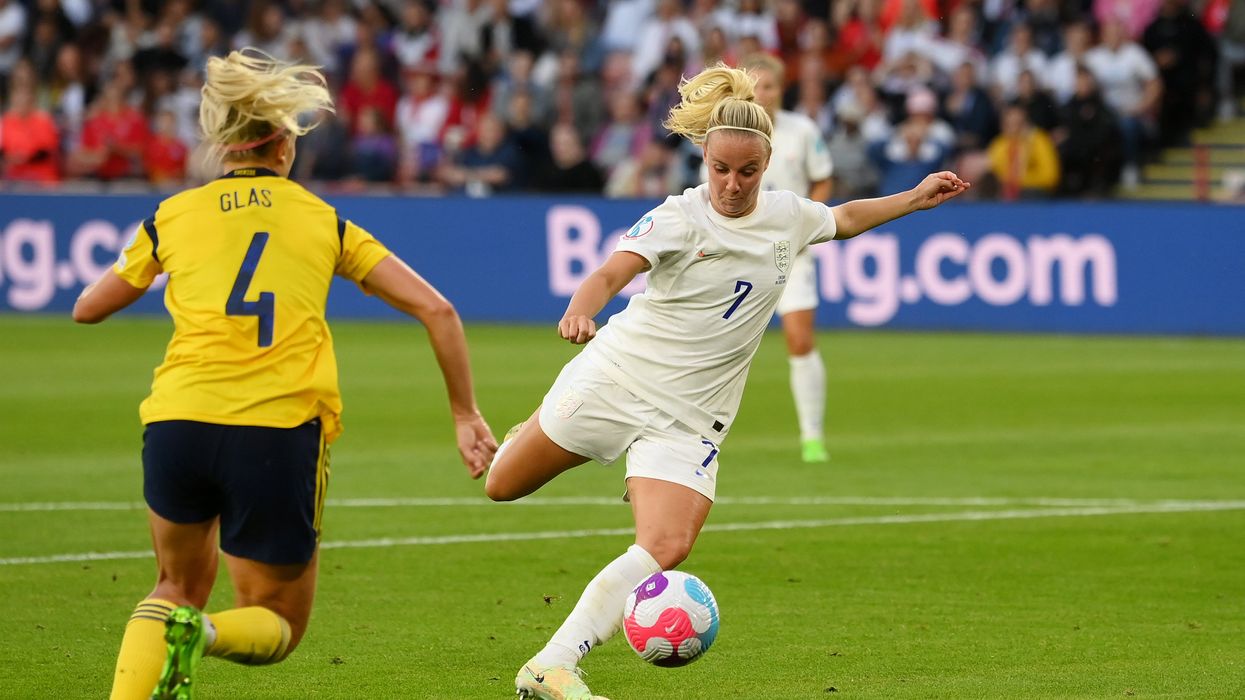Alex Daniel
Jul 14, 2023

England star Beth Mead is one of many to be ruled out after rupturing her ACL
Mike Hewitt/Getty Images
As football fans across the globe gear up for the Women’s World Cup, some of the biggest names in the game including England captain Leah Williamson will be absent because of a wave of ACL injuries which has rocked the sport in recent years.
It is a common sight in the women’s game when clubs and countries are forced to announce that their biggest stars will be out for months on end. Williamson ruptured her ACL – or anterior cruciate ligament – in April, and will miss the World Cup as a result.
Other stars to miss the tournament are England’s Beth Mead and the Netherlands striker Vivianne Miedema, who both suffered the injury in November. Canada's Janine Beckie and the USA’s Catarina Macario are in the same boat.
The issue also blighted the Euros last summer, as Ballon d’Or winner Alexia Putellas missed the tournament after rupturing her ACL days before the opening game. Northern Ireland’s Simone Magill was also ruled out, along with France striker Marie-Antoinette Katoto, who had been one of the favourites to win the Euro 2022 Golden Boot.
Sign up to our free Indy100 weekly newsletter
But what is this injury, and why are so many women’s footballers getting it?
A recurring problem
The ACL is a small band of connective tissue in the centre of the knee. It can tear during routine activities like jumping. Any athlete that gets it faces surgery followed by six-to-12 months of rehab.
Men also sustain ACL injuries – the likes of Virgil Van Dyke and Zlatan Ibrahimovic are high-profile examples in recent years – but it is more prominent in the women’s game.
Speaking to Sky Sports last year, female health specialist Dr Emma Ross said: “We know female athletes are up to six times more likely to have a non-contact ACL injury than their male counterparts.”
“In sport and exercise science research, only about 6 per cent of the studies are done exclusively on females – meaning they study things that are happening to the female body – so we don't have a lot of research on female athletes.
“But what we do know about the menstrual cycle and injury is that the changing hormones across the cycle can impact the physiology and biomechanics of the body.
“For example, when oestrogen is elevated in the menstrual cycle, and that happens in about the second week, it can affect the stability of joints. It can interfere with the collagen in our joints and it can create looser, more lax joints. A loose joint is therefore less stable and more inclined to injury.
“So we do have some information about loose joints, but what we don't have is the end step of whether that really does increase the risk for injury in female athletes.”
‘Please no more’
Meanwhile, the workload for elite women’s footballers has grown because of the spiralling popularity of the game. Top players can play up to 44 matches a year, while three out of every four summers there is a major tournament, whether it is the Olympics, Euros or World Cup.
The game has grown more professional in lockstep with the ever-busier schedules in recent years, with more Premier League clubs than ever pouring significant cash into their women’s teams.
Arsenal, Chelsea, Liverpool, Manchester City, Manchester United and Tottenham Hotspur spent a combined £33m on running their women’s football teams in the year to July 2022.
Nonetheless, it remains lightyears behind the men’s game in terms of funding. The teams paid £186m to agents for men’s team transfers in the same season, according to the Telegraph.
There are other factors at play too – women’s feet are significantly different from men’s in shape and size, and experts are concerned that ill-fitting boots could be contributing to the wave of injuries.
Sports rehabilitation expert Dr Katrine Okholm Kryger told Sky Sports that “we know that women have a two to five times higher risk of anterior cruciate ligament (ACL) injuries”, which affect the knee.
Many of the major manufacturers are developing women's specific boots which should be available for the FIFA Women's World Cup in 2023, but Dr Okholm Kryger said the lack of available football boots is a general concern.
She said she hopes to start a discussion and “kindly nudge manufacturers and research towards the need to pay more attention in this area”.
Until they listen, the problem could continue depriving women’s football of its biggest stars.
Have your say in our news democracy. Click the upvote icon at the top of the page to help raise this article through the indy100 rankings.
Top 100
The Conversation (0)













